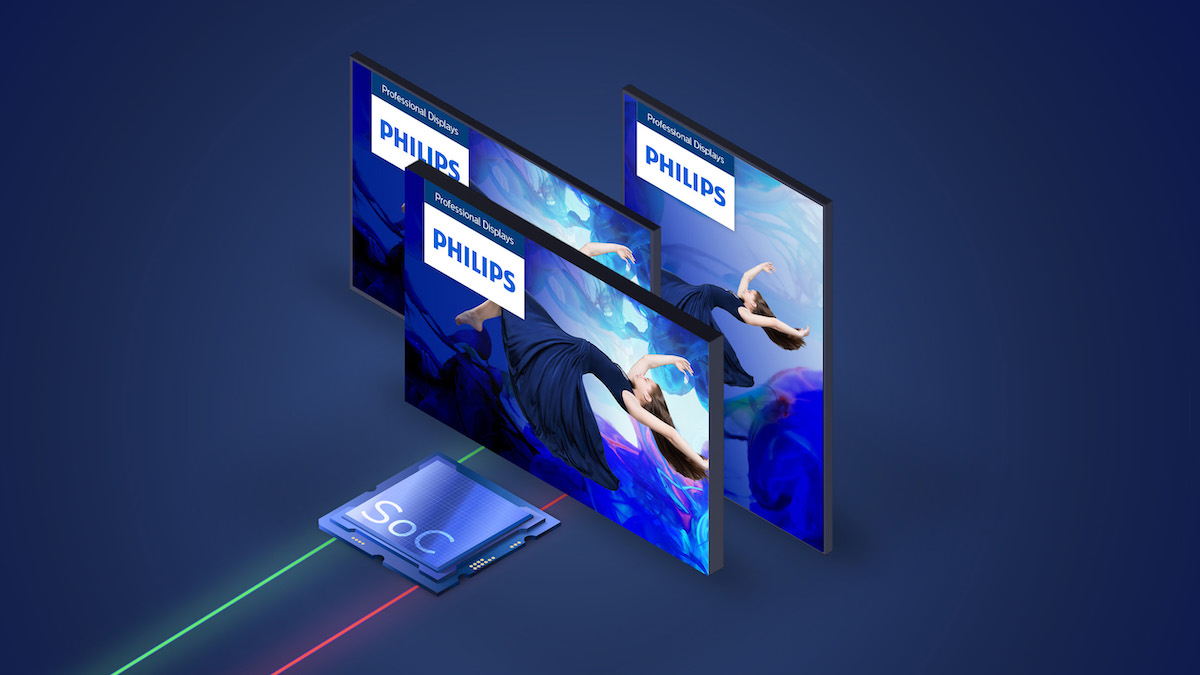
PPDS Adds SaaS Remote Device Management Solution, Dubbed Wave, To Philips Pro Display Line-up
May 14, 2022 by Dave Haynes
PPDS, the sales front end of Philips’ pro display products and solutions, has launched a new cloud platform that builds advanced remote device management capabilities into screens that have embedded smarts.
Called Wave, the “highly secure, intuitive and scalable remote device management platform” was developed by Philips/PPDS to help reduce the costs of installation and ongoing service for fleets of pro displays, including interactive screens and LED video walls.
“Built to scale for fleets,” says PPDS in PR, “both locally and globally, it can securely provision and monitor hundreds of thousands of displays worldwide.”
Extensively trialled and co-developed with multiple PPDS system integration partners across EMEA and North America, the Wave platform removes the complexities of installing and setting up different display models and generations. Allowing system integrators to focus on bringing value and innovation to their customers, rather than struggling with compatibility.
Wave is built around a SaaS subscription model, so while the platform is now a main element of Philips smart displays, end-users and integrators need to opt in and pay to use it.
“With Wave, you have a secure, future-proof and scalable solution to manage your professional displays globally,” says Sian Rees, International Product Manager at PPDS. “As a professional display provider, we understand the need to access the latest Philips professional products and solutions and to continue to evolve your business offering to end-customers. We designed Wave with the user experience being paramount for both system integrators and third parties developing with our APIs. This Wave launch is the first step in providing a powerful, cross-platform solution that enables our partners to bring more value to the AV ecosystem and our short-term roadmap already includes the addition of hospitality TVs and LED walls.”
Introduced this past week at the ISE trade show in Barcelona, Wave is now included out-of-the-box with all Philips Q-Line, D-Line, T-Line and C-Line displays, and any existing display with Android 7 and above can also be upgraded and provisioned.
The Wave platform allows you to manage any number of accounts and displays across different locations, as well as making bulk updates, updating firmware, debugging screens, adjusting settings, adding basic content and receiving alerts – easily and reliably.
Accessible anywhere, AV and IT managers, and even non-IT focused staff, are able to view status (including screenshots), and access or assign precise information, details and controls to each display. Eliminating the need to go on site to debug and make changes and avoiding costly truck rolls and interruption of service.
PPDS says Wave will eventually extend to include devices like hospitality TVs (hotel room smart TVs).
“The industry has spoken and with Wave, designed to work hand-in-hand with our Android SoC, we have left no stone unturned,” says Franck Racapé, Head of Global Commercial at PPDS. “PPDS has evolved from a provider of hardware to an enabler of total solutions, bringing a constantly growing choice of products, software and services to our partners. With Wave, we’re bringing product innovation, out-of-the-box, with a modern, fresh and highly intuitive user experience. With Wave, managing your displays has never been easier.”
Device management is of huge importance to anyone charged with maximizing uptimes and controlling field operations costs, as good remote tools can save a lot of money never or only rarely spent “rolling a truck” to a remotely deployed screen or screens. A lot of the top digital signage CMS software providers already have really good device management tools, but they may have more to do with the external playback devices they formally support, as opposed to smart displays that are developed and controlled by the screen manufacturers. Those embedded System On Chip processors have always made sense as part of the solution for monitoring what’s going on with remote screens.



Leave a comment